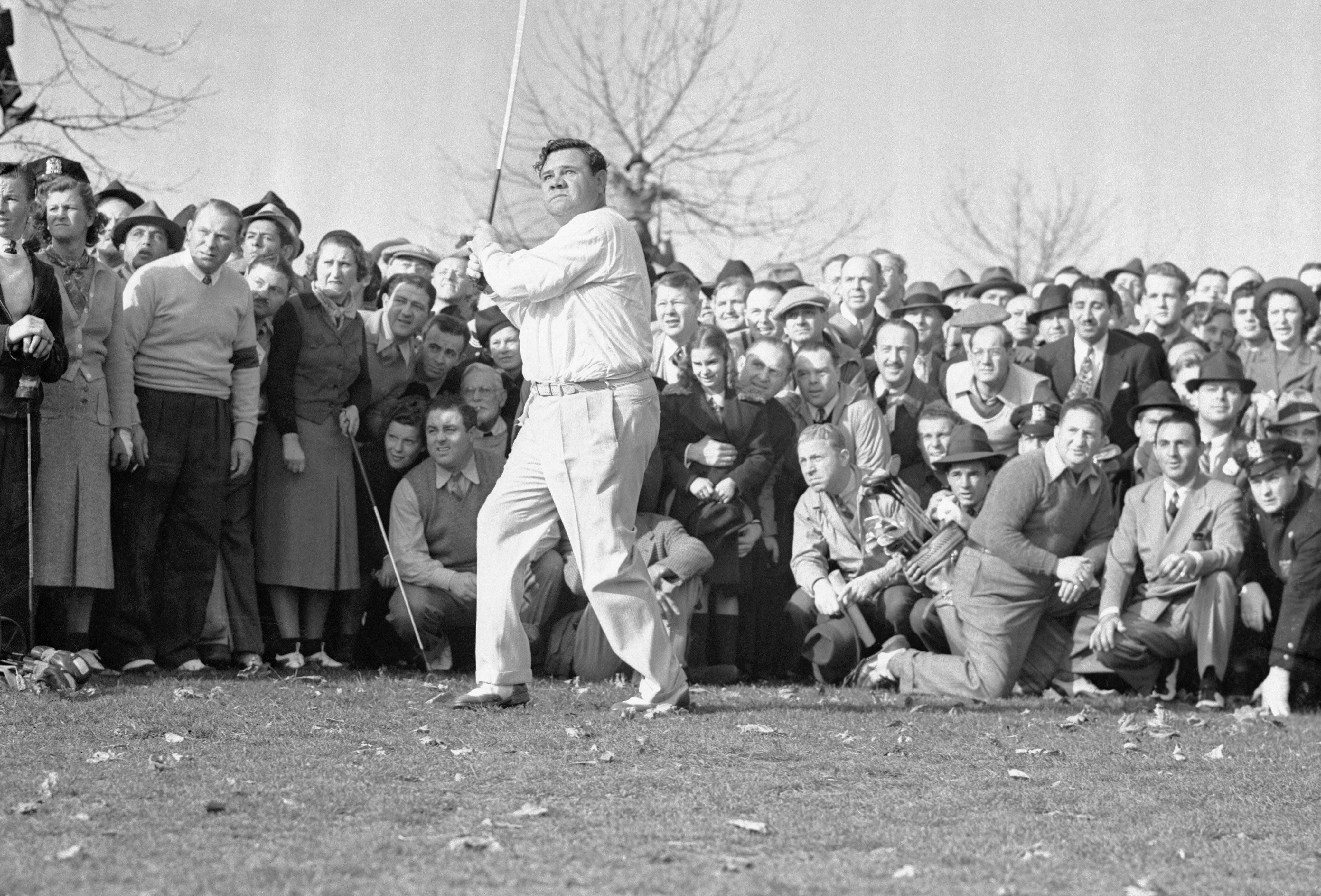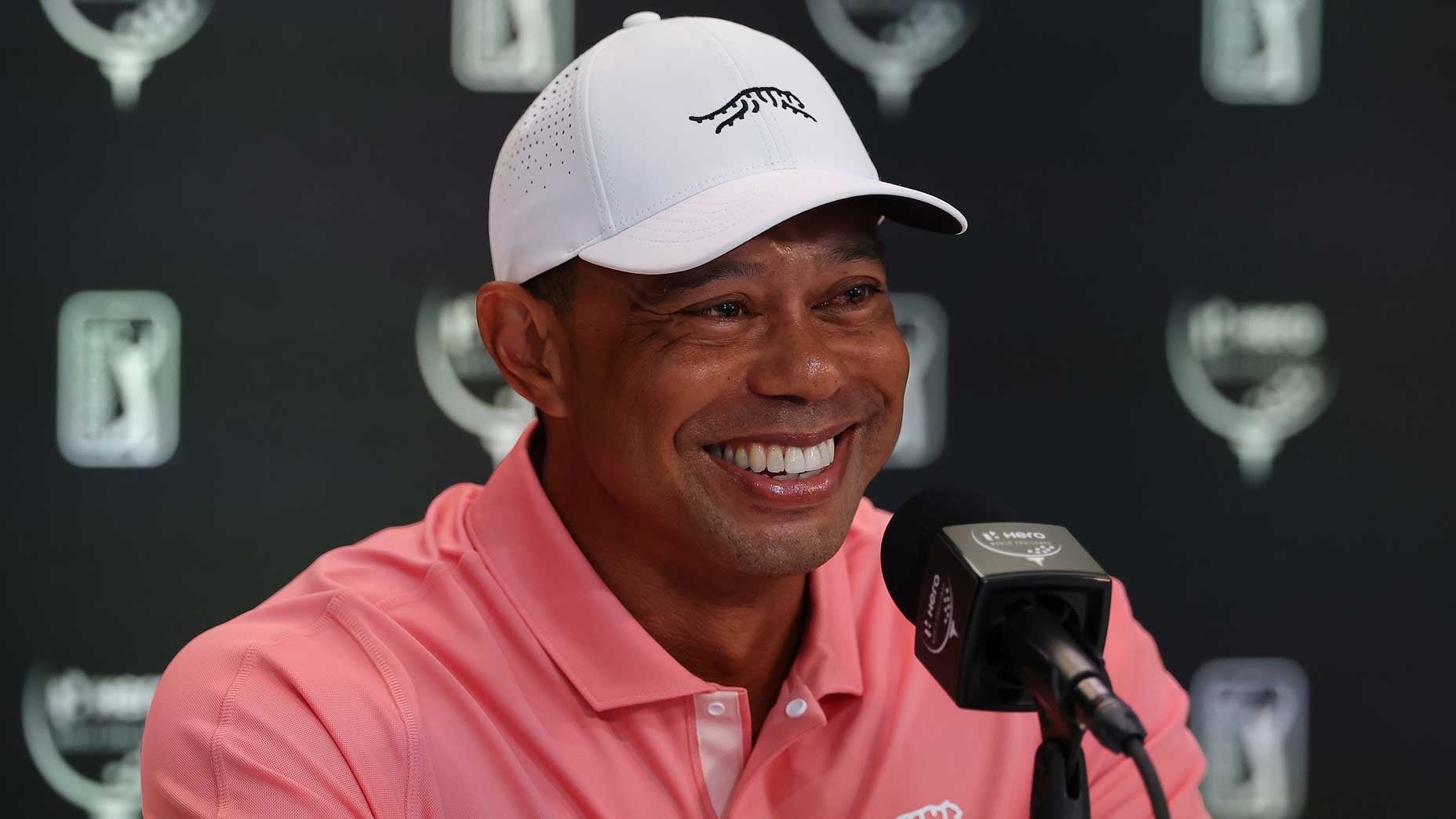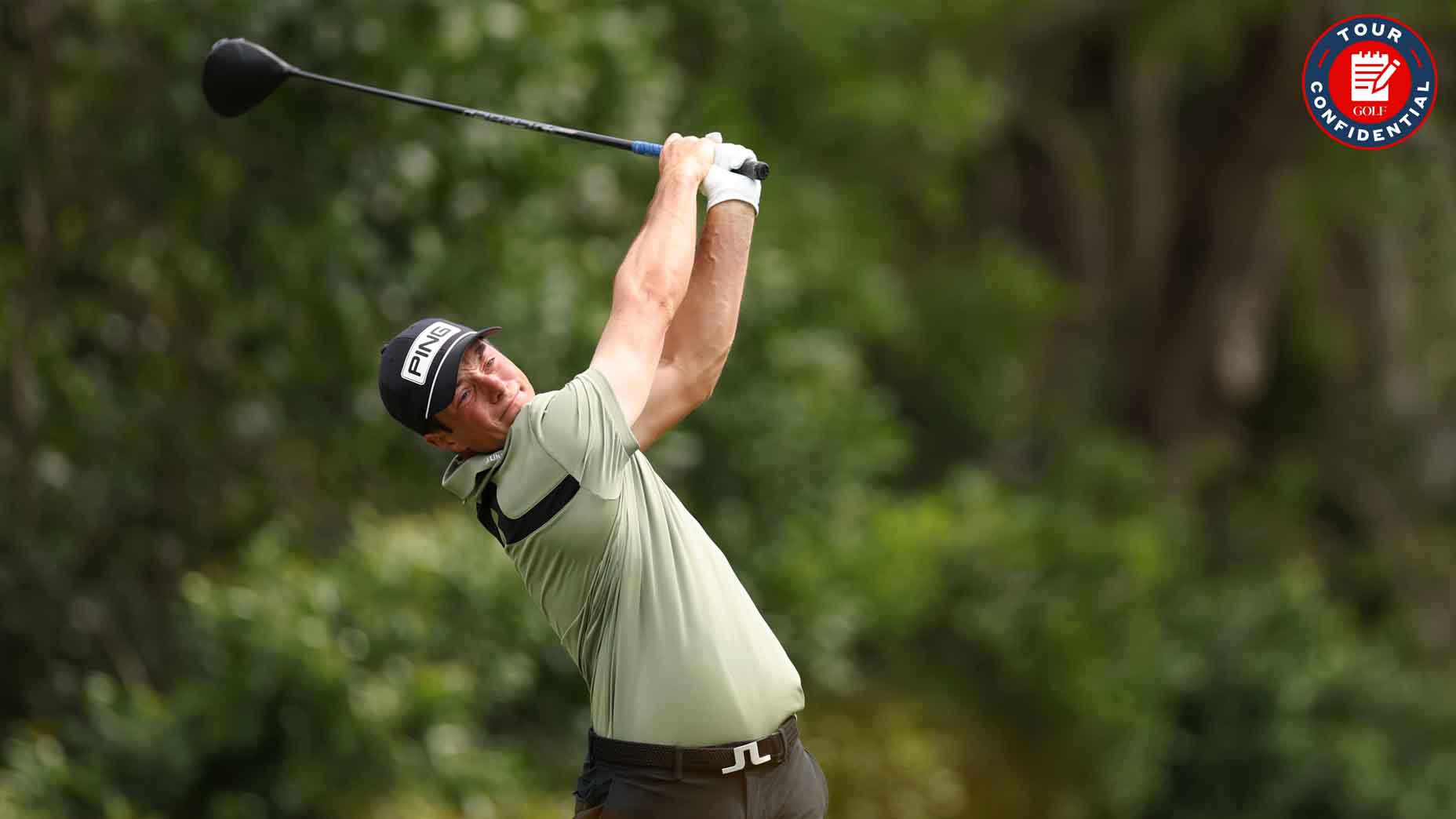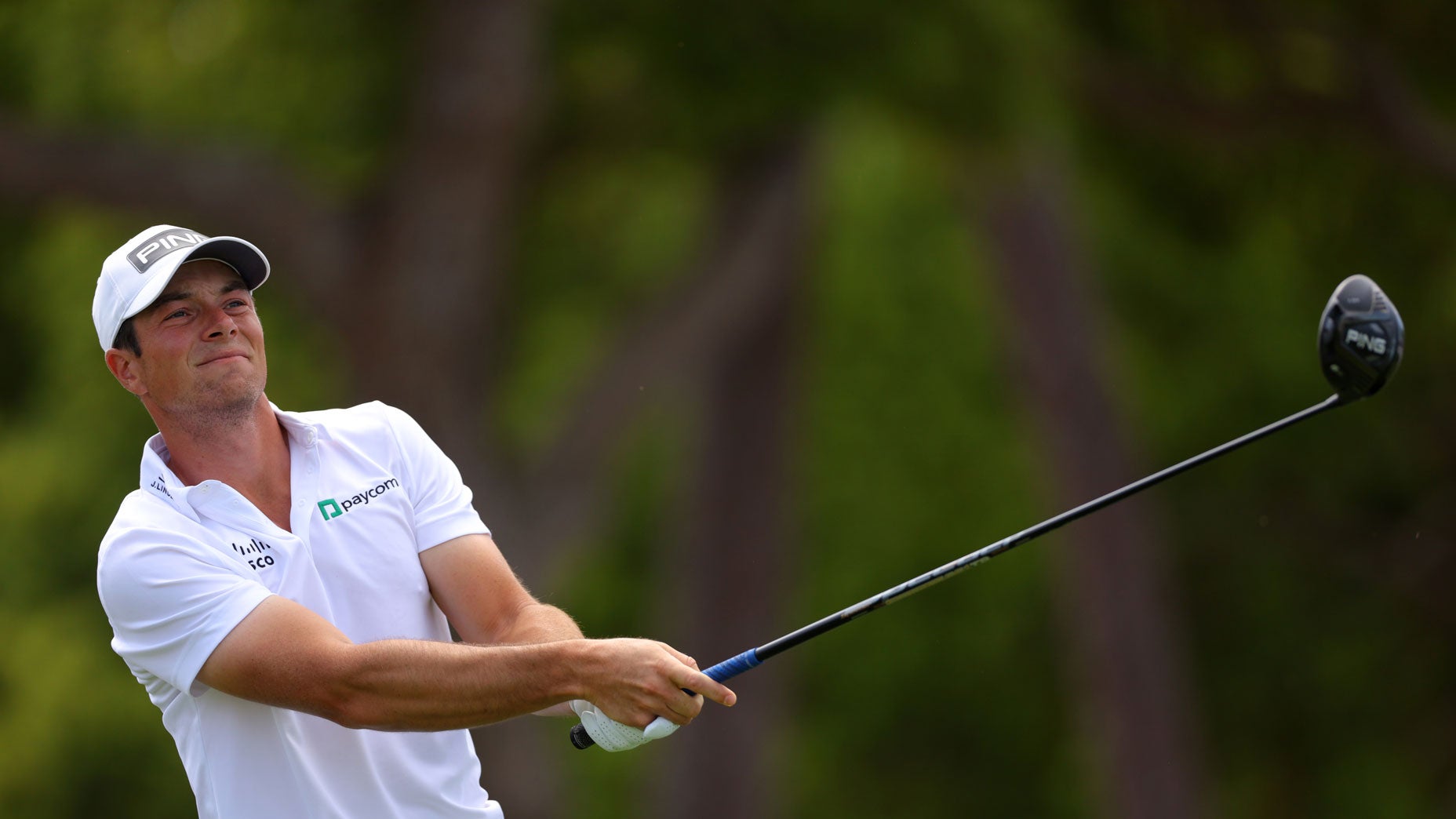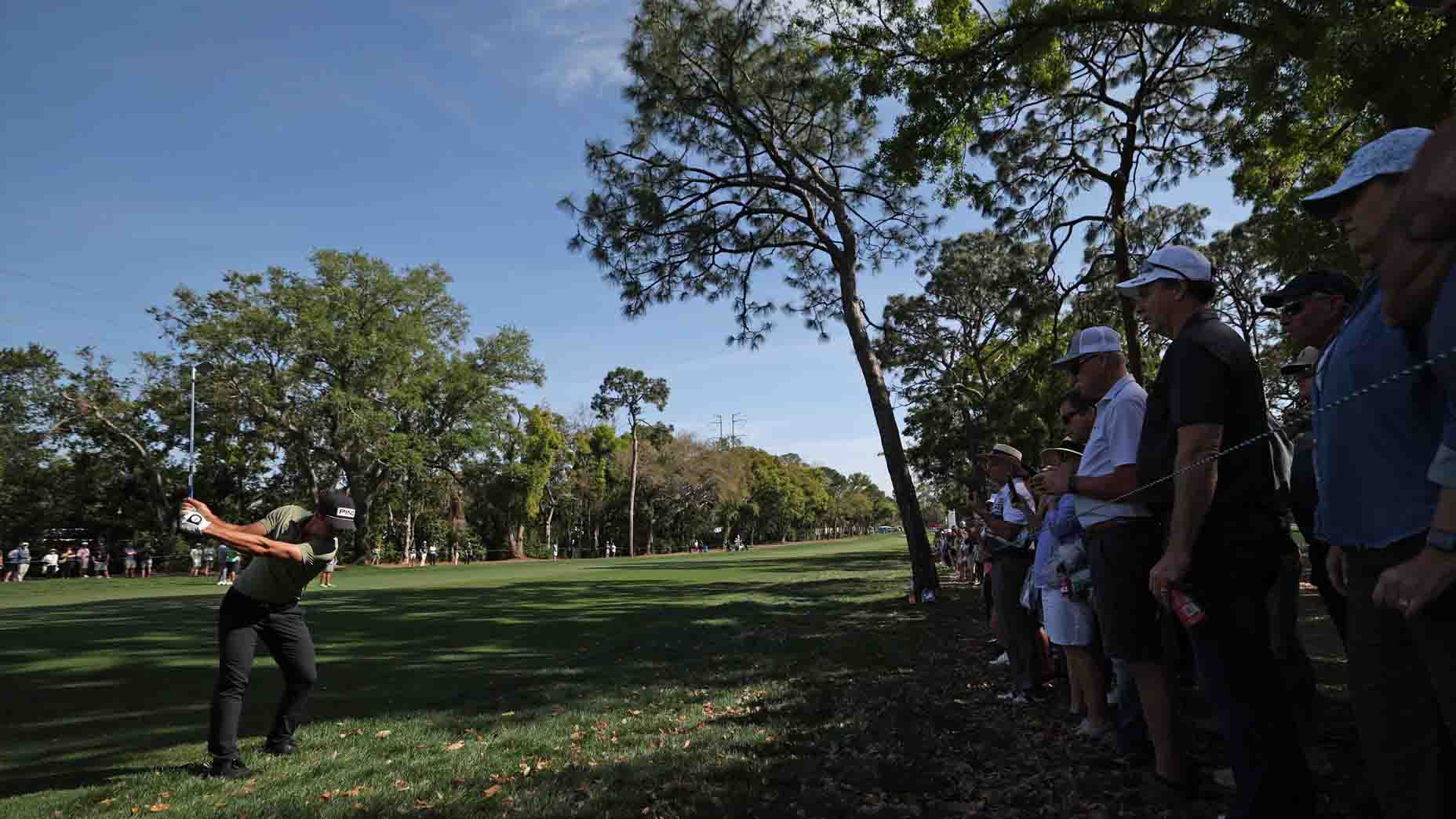The Sultan of Swat, they called him. The Big Bam, the Jovial Giant, the Colossus of Clout, the Behemoth of Bust, the Wizard of Whack. During the Roaring Twenties, when he restored America’s faith in baseball after the 1919 Black Sox scandal, Babe Ruth reached a level of fame that redefined fame. He slugged more home runs than most teams hit. He hobnobbed with war heroes and movie stars who were dazzled to meet him. Crowds thronged railroad crossings just to watch his train go by. In 1923, when the New York Yankees spent a shocking $2.4 million on a new stadium, sportswriters dubbed it “the House that Ruth Built.” In 1930, a reporter asked how a ballplayer could get paid more than the president of the United States. Ruth said, “I had a better year.” The Babe also played some golf.
In fact, Ruth was once the most famous golfer in America. Bobby Jones was the best golfer in Ruth’s day — the game’s superstar — but it was a minor sport then, far behind baseball, boxing, horse racing and college football in popularity. It’s true that Jones drew crowds of thousands while chasing his 1930 Grand Slam, but far more often he played for galleries that would disappoint Briny Baird.
“Jones was a celebrity to golf fans, but there weren’t that many of them,” says Doug Vogel, a member of the Society for American Baseball Research who has spent nearly ten years researching a book about Ruth’s golf game. “In contrast, Babe Ruth was the most famous athlete in the world. He played a big role in making golf a spectator sport in America — arguably, bigger than Jones.”
We’ve grown accustomed to the sight of robust galleries at PGA Tour events. It’s estimated that 50,000 spectators per day attended the men’s 2014 U.S. Open at Pinehurst. A few months earlier, a record 563,008 fans turned the Phoenix Open into golf’s biggest party. In the 1930s, it was Ruth who made the game look like fun, and whose passion for golf not only generated large crowds but motivated millions of average Americans who had never pictured themselves playing the rich man’s sport.
Ruth was 20 when he took up the game in 1915, during his rookie year with the Boston Red Sox. The Sox trained in Hot Springs, Arkansas, a gambling-and-golf mecca where baseball players rubbed shoulders with crime lords like Al Capone and hustlers like Titanic Thompson. The six-foot-two jock whaled at the ball, sometimes snapping the shaft of his driver. He launched 300-yard drives (using wound-rubber Haskell balls, no less) as well as hooks and slices that were still rising as they sailed out of bounds. “With broken clubs and lost balls taken into account, golf is a pretty expensive pastime for Babe Ruth,” quipped one news account. To his credit, he always took his penalty strokes and putted out. No gimmes for the Babe. And he improved in a hurry. Despite his image as a roly-poly powerhouse, he was a terrific athlete and light on his feet.
On January 5, 1920, Ruth was in Los Angeles, playing a round at Griffith Park, when news arrived that after five years with the Red Sox, the team had sold him to the Yankees for $100,000. Three months later he reported to the Yankees’ training camp in Florida but skipped his first practice to play 18. He was falling under the game’s spell, improving from a scattershot hundred-shooter to someone who could occasionally break 80, and discovering that this country-club diversion suited his appetites and talents. A golfer could drain a flask of whisky while playing and eat a hot dog or three between holes — what a game!
In his first year with the Yankees, the 25-year-old Ruth (who pitched for the Sox but was moved to the outfield by the Bombers) batted .376 with 54 home runs. His feats on the links were somewhat less Ruthian. “Everyone saw him as this big, jolly character, but he cared about the game, and it frustrated him,” Vogel says. Once, during a radio interview, the Bambino was talking about his passion for golf when his wife, Claire, chimed in: “And I’ve often heard you come off the golf course saying, ‘Baseball really is a great game!'”
Ruth took lessons from Alex Morrison, a golf guru to the stars who pioneered swing-sequence photos by hanging a lantern from a club swung in a dark-room. “He got better,” says Vogel, “and he could play under pressure. Whenever the Babe teed it up, the papers covered it. He became a single-digit handicapper, but his putting held him back. I discovered one scorecard with a 69 — I think it’s the only time he broke 70.”
By the 1930s, the late years of his baseball career, he played almost daily with Sammy Byrd, a substitute outfielder known as “Babe Ruth’s legs.” Ruth was heavy and gouty by then; Byrd would pinch-run for him. More important to the Babe, Byrd was probably the best golfer ever to play major league baseball. After eight years with the Yankees and Reds, Byrd joined the PGA Tour and won six times. He finished third in the 1941 Masters, fourth in the 1942 Masters, and lost the 1945 PGA Championship in a match-play final against Byron Nelson. During his baseball days he tutored Ruth on the golf course, but it was the Babe who gave Byrd a practice tip golfers still use. During batting practice one day, Ruth tucked a hand towel in his armpit to keep his front elbow close to his chest. Byrd tried the trick, passed it on, and golfers have tucked towels on the driving range ever since.
In 1934, the year of his last full season as a ballplayer, Ruth announced his desire to manage the Yankees. Owner Jacob Ruppert promised the aging icon the job but was just stringing him along, hoping to keep the greatest Yankee loyal to the franchise. In private, Ruppert asked cronies, “How could Ruth manage a team when he can’t manage himself?” The Babe’s reputation as baseball’s Falstaff stuck, despite the fact that he was now a family man, happily ensconced in an Upper West Side apartment with Claire and their two daughters. “I don’t think Mr. Ruppert realizes I have matured,” he fumed to reporters. “I’m a grown man, not the playboy I was in 1919.” Still, he was snubbed again and again. After his retirement in 1935, he’d play 36 holes in New Jersey, then hurry home and ask, “Did the phone ring?” His wife knew what he meant: Did anyone call about a baseball job? She hated telling him no.
“It’s hell to get older,” the Babe said.
Seventy-nine years later, in 2014, I found Julia Ruth Stevens sitting in a quiet, comfortable house in Henderson, Nevada. “Daddy was dying to manage a ball team,” she said. Now 98 and legally blind, Ruth’s surviving daughter can still see “how his face fell when Mother gave him bad news. He was so hurt not to be managing. But he still had his golf. When it got too cold to play in New York and New Jersey, we’d pick up and go to Florida.”
As Ruth told a New York reporter in the late 1930s, “I played 365 rounds last year. Thank God for whoever invented golf.”
In 1939, the 44-year-old Ruth represented Long Island against teams from New Jersey and Westchester County in the annual Stoddard Cup. “This was serious golf,” Vogel says. “The club champions on his side usually carried him because they were good sticks and he was, well, Babe Ruth.” With nine holes to play, Ruth’s squad looked beaten. “Then he reeled off the best nine holes of his life,” Vogel says. “At his best, if his putter was working, he was a scratch player. That day, when it counted, he was better.” The next morning’s New York Times carried a six-column headline: Babe Ruth’s Double Victory Helps Long Island Capture Golf Trophy.
Babe’s golf exploits sometimes drew more attention than he wanted. A year after his Stoddard Cup heroics, Ruth played New Jersey’s Pine Valley for the first time. New York newsmen flocked to the course, and Ruth bet them five dollars apiece that he’d break 90. He shot 85. That evening, celebrating his victory, he called Pine Valley “a pushover” and offered the writers double or nothing. “I’ll break 85 tomorrow,” he said. “Who wants some of that?” Eleven writers anted up, along with a pair of Pine Valley waiters. The next day Ruth was whistling while he swung, looking like a million bucks, when he hooked a shot into the trees on the long, uphill 15th. Several swats sent his ball in several directions. When a playing partner asked if he needed a line to the green, he said, “Hell, I don’t need to know where the green is. Where’s the golf course?” Ten minutes later, putting out for a 12, he had no chance to break 90. He paid off his bets and bought drinks for the house.
“Daddy thought it was funny — the way one bad hole ruined his day,” his daughter Julia recalls. “In baseball, he could strike out and still win the game his next time up.” Ruth liked to say that the main thing in golf was to hit the ball to center field.
In 1941 Ruth staged a headline-grabbing charity event with fellow baseball legend Ty Cobb. Rather than flip a tee for first-tee honors, the old rivals grabbed a driver and played hand-over-hand like sandlot players. Ruth gave the fiery-eyed Cobb a pat on his bald head and got a slightly bemused look for it. Cobb, a fierce competitor and a better putter than the Babe, won two rounds out of three in what he called “the Ruth Cup,” and the victory meant so much to him that he put the trophy over his fireplace.

Another charity match from around that time pitted Ruth and Masters champion Jimmy Demaret against Gene Sarazen and former heavyweight champ Gene Tunney. Sarazen, who mocked the decorous hush that hung over the game, had a kindred spirit in the boisterous Babe. That day, with a festive gallery shouting huzzahs at Connecticut’s Shorehaven Golf Club, Fred Waring and his band blasted swing tunes while the golfers swung. At one point Ruth backed off a putt. He turned to the crowd, cupped his hand around his ear and said, “C’mon, let’s hear it!”

“With Waring’s noisiest musicians tooting and trumpeting, with 5,000 spectators chattering, cheering and rattling the putter,” Time magazine reported, “Demaret and Ruth defeated Sarazen and Tunney, 2 & 1. The gallery voted it more fun than a circus.” Yet the circus at Shorehaven was practically a church social compared with a Ruthian match that might have been the wildest round ever played.
It happened at Fresh Meadow Country Club on Long Island. The showdown featured the hustler and trick-shot artist Laverne Moore — a.k.a. the Mysterious Montague — and the world’s leading Babes, Ruth and Didrikson. (Mildred Didrikson, 16 years younger, claimed she got her nickname by swatting five Ruthian homers in a girlhood baseball game.) The portly Mysterious Montague was known for shooting par or better using a baseball bat, a rake and a shovel. In November 1937 he and a top amateur, Sylvia Annenberg, took on Ruth and Didrikson in what the event’s sponsor, the New York Journal-American, billed as the ultimate golf exhibition.
Ruth made his way to the club in high style. Returning from a hunting trip in Canada, he rolled off an ocean liner in his Stutz Bearcat touring car with three deer carcasses strapped to the fenders and another trophy, a 250-pound black bear, slumped in the passenger seat. At the course he waded through one of the biggest, rowdiest crowds in early golf history. Promoters, hoping for a record crowd, printed 6,000 tickets. That morning they collected every single one, then opened the gates to thousands more. One estimate put attendance at 12,000. Leigh Montville, who wrote a book about Ruth and another about Montague, pictured “10,000 people, 12,000 people, nobody was sure how many thousand people.” The New York Times likened the throng to the one at Bobby Jones’s Slam-clinching U.S. Amateur at Merion in 1930, “except at Merion there was a semblance of order, whereas here there was none.” Jones’s crowd was a golf crowd; here, as the sponsoring Journal-American reported, “Sixty percent of those present didn’t know a bunker from a bung-hole.”
The mob thronged the fairways, forcing the golfers to drive through an alley some five yards wide. Montague surprised Ruth by outdriving him, and surprised a fan with a drive that struck the bill of the man’s hat and sent the hat spinning. The ball still carried 200 yards.
“This is worse than any World Series,” Ruth said. “At least at the ballpark, the crowd has to stay in the stands.”
Spectators danced on the greens. They pocketed approach shots. On the sixth hole, they knocked Ruth off his feet. Didrikson, surrounded by gallery members, ducked her shoulder and powered through them like a running back.
After the two Babes and Montague hit the green on a par 3, the mob forgot all about Sylvia Annenberg. Perched on the tee, seeing a green encircled by fans standing six deep, she lofted a fairway wood over the jostling crowd. The ball hopped and stopped an inch from the cup. It was the shot of the day and one of the last. Fearing a melee, the promoters declared the match over after nine holes. They had no choice. Among other indignities, a kilt-wearing referee felt a sudden breeze between his knees when the mob swiped his tartan.
There could be no definitive accounting of the match, not with purloined balls and kilts and further fan interference. As Babe Didrikson said, “I don’t mind sugar daddies in their proper place, but I hope I don’t ever have to play chip shots again while sitting on their knees.” The Journal-American called it a 2-up victory for the Babes, who swore they’d never do anything like that again without bodyguards.

They say that every life story has a downbeat ending: The hero dies. For Ruth, the ending came quickly.
Later in life he gave up any hope of managing a baseball team. “Baseball broke his heart, but golf kept him going,” his daughter says, remembering how he used to wake her at dawn, cook breakfast for both of them — fried baloney-and-egg sandwiches — and then head to St. Alban’s Country Club in Queens. He would stop at a butcher shop on the way, buy the butcher’s best steak, toss the steak to the chef at the club and enjoy a few drinks while the chef grilled it for him. He’d down two or three scotches with his pre-round lunch, and a couple more at the turn, and still break 80 (or at least 90), which called for another round of drinks. Babe Ruth was invincible, invulnerable, until he wasn’t. In the mid-1940s he began to feel aches in his face, neck and larynx. Nobody told him he had cancer — the word was taboo — but he knew. “The termites have got me,” he said.
He teed up a drive at St. Albans in 1948. He was 53. He swung hard and caught the ball between the screws. It flew high and true, only to land less than 100 yards away. The Babe stood on the tee and wept.
“The greatest figure the world of sport has ever known has passed from the field,” Grantland Rice wrote a few months later. “Game called on account of darkness. Babe Ruth is dead.”
But not forgotten. “Sixty-some years after his death, he’s still one of the most famous names in sports,” Vogel says. “What bothers me is that hardly anybody knows what he did for golf. We’re talking about the man who pioneered celebrity golf. The first famous left-handed golfer. Babe Ruth played a major role in popularizing the game in America. Of course, so did Bing Crosby, George H. W. Bush, Dwight Eisenhower, Bob Hope, Dan Jenkins and Dinah Shore. The difference is, they’re all in the World Golf Hall of Fame. Why isn’t he?”
Good question.

For more news that golfers everywhere are talking about, follow @golf_com on Twitter, like us on Facebook, and subscribe to our YouTube video channel.


